|
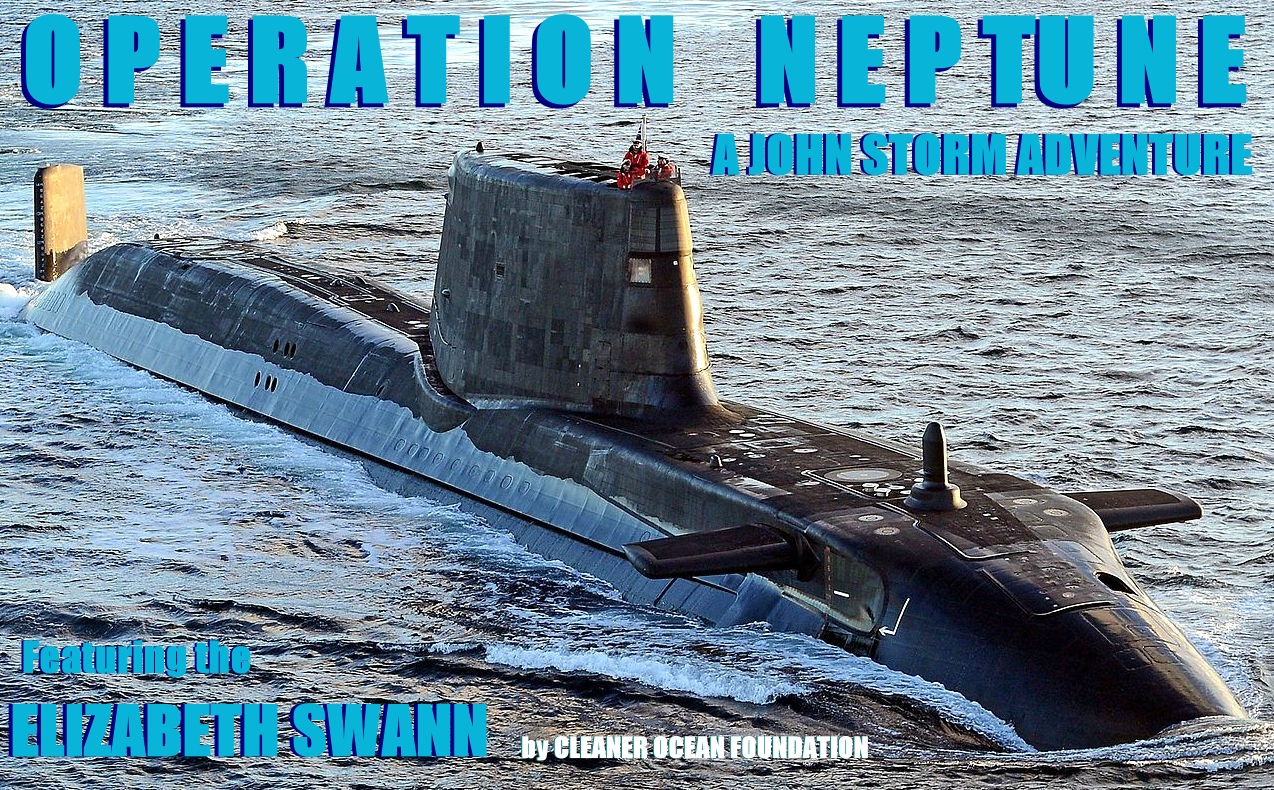
ICE
STATION ZEBRA
ATLANTIS
STORY
MAP &
OPERATION HOMEPAGE
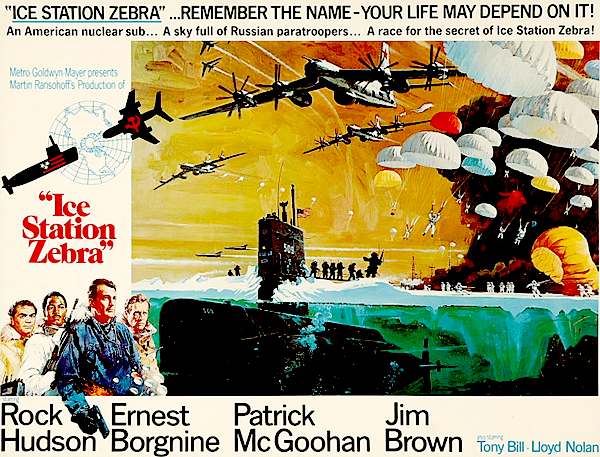
ICE STATION
ZEBRA, MGM 1968 - A cold-war era suspense and espionage film loosely based upon
Alistair MacLean‘s 1963 novel of the same name. Both have parallels to real-life events that took place in 1959, concerning a missing experimental Corona satellite capsule (Discoverer II) that inadvertently landed near Spitsbergen, situated in the
Arctic
Ocean, on April 13th, believed to have been recovered by Soviet agents.
In the novel, there is no Russian submarine and no confrontation on the ice with the Russians. The attempted sinking of the US submarine, is we think, based on the loss of the Royal Navy submarine HMS Thetis in Liverpool Bay in 1939, where the inner cap to a torpedo tube is tampered with to make it appear that the outer door was closed, but was in fact open
to the ocean allowing water to enter at the rate of one ton per second, causing the submarine to sink with the loss of 98
lives.
Ice Station Zebra is a 1968 American espionage thriller film directed by John Sturges and starring Rock Hudson, Patrick McGoohan, Ernest Borgnine, and Jim Brown. The screenplay is by Alistair MacLean, Douglas Heyes, Harry Julian Fink, and W. R. Burnett, loosely based on MacLean's 1963 novel. Both have parallels to real-life events that took place in 1959. The film concerns a US Nuclear Submarine that must rush to the North Pole to rescue the members of the Ice Station Zebra.
The film was photographed in Super Panavision 70 and presented in 70 mm Cinerama in premiere engagements. The original music score is by Michel Legrand. Ice Station Zebra was released on October 23 1968, to mixed reviews, and it was not a box office success, earning only $4.6 million over its $8-10 million budget.
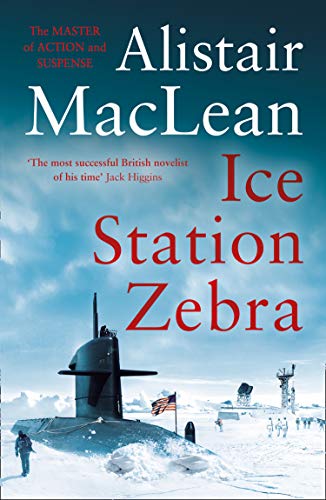
PLOT
A satellite re-enters the atmosphere and ejects a capsule, which parachutes to the Arctic, approximately 320 mi (510 km) northwest of Station Nord, Greenland in the Arctic Ocean ice pack. A person approaches, guided by a homing beacon, while a second person secretly watches from nearby.
Commander James Ferraday, captain of the American nuclear attack submarine USS Tigerfish stationed at Holy Loch, Scotland, is ordered by Admiral Garvey to rescue the personnel of a British scientific weather station moving with the ice pack named Drift Ice Station Zebra, however, this is a cover for the real mission.
British intelligence agent "Mr. Jones" and a U.S. Marine platoon join the Tigerfish while in dock. After setting sail, a Kaman SH-2 Seasprite helicopter delivers Captain Anders, a strict officer who takes command of the Marines, and Boris Vaslov, a Russian defector and spy, who Jones trusts. The submarine sails beneath the thick Arctic pack ice but is unable to break through with its conning tower. Ferraday orders a torpedo launch to break a hole in the surface. However, when the inner torpedo hatch is opened, sea water rushes in flooding the compartment causing the submarine to nose dive. The boat is only saved shortly before reaching crush depth. After an investigation, Ferraday discovers that the torpedo tube was sabotaged. Ferraday suspects Vaslov, while Jones suspects Anders.
After an area of thin ice is detected, the Tigerfish breaks through to the surface. Ferraday, Vaslov, Jones, and the Marine platoon set out for the weather station in a blizzard. On arrival, they find the base almost burned to the ground and the scientists nearly dead from hypothermia. Jones and Vaslov start questioning the survivors about what happened.
Jones reveals to Ferraday that he's looking for an advanced experimental British camera which used an enhanced film developed by the Americans. The Soviets stole the technology and sent it into orbit to photograph locations of American missile silos. However, the satellite also recorded all the Soviet missile sites, as well. After a malfunction, it crashed near Ice Station Zebra in the Arctic. When Soviet and British agents arrived to recover the film capsule, the scientists were caught in the crossfire. Ferraday sets his crew to search for the capsule. Jones finds another tracking device but is knocked out by Vaslov, a Soviet double-agent and the saboteur. Anders confronts Vaslov and the two men fight before the dazed Jones shoots and kills the American Captain.
Tigerfish detects approaching Soviet aircraft. Ferraday lets Vaslov use the tracker to locate the ice-buried capsule. A large force of Soviet paratroopers arrive and demand the film. After Ferraday hands over the empty container, a brief firefight occurs when the deception is discovered. In the confusion, Vaslov tries to take the film but is wounded by Jones. Ferraday orders him to give the film to the Soviets. The canister is sent aloft by weather balloon for recovery by aircraft. Moments before it is taken, Ferraday activates his own detonator, destroying the film and denying either side the locations of the other's missile silos. The Soviet colonel concedes that both his and Ferraday's missions are effectively accomplished so leaves.
Tigerfish completes the rescue of the civilians. A teletype machine reports the news that the "humanitarian mission" has been an example of better cooperation between the West and the Soviet Union.
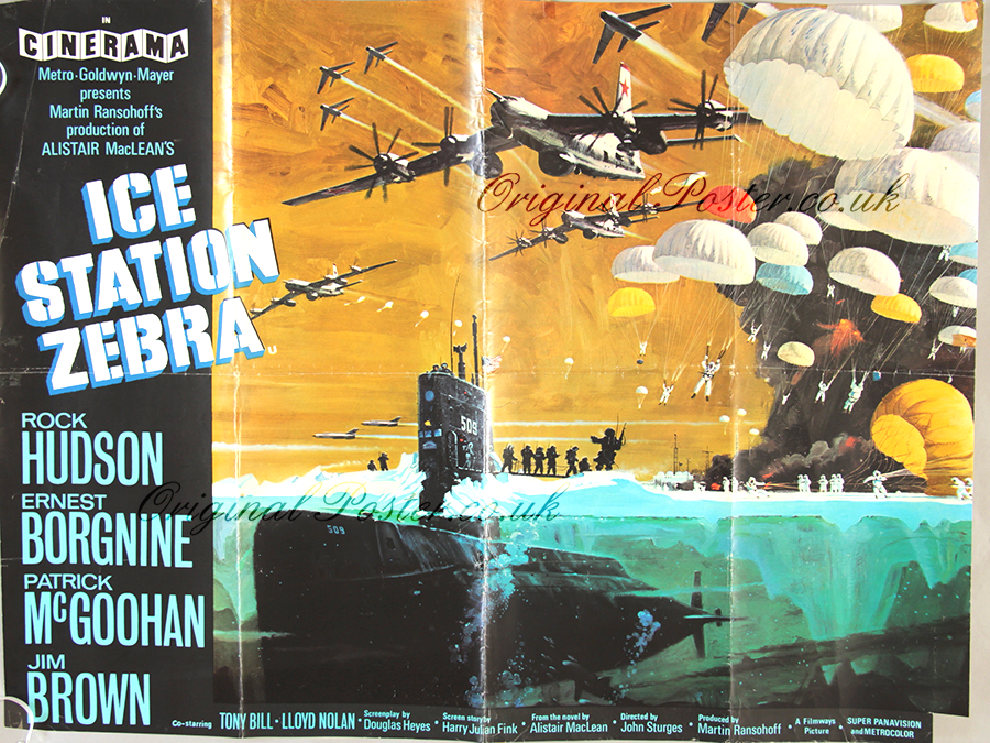
CAST
- Rock Hudson as Cdr. James Ferraday
- Ernest Borgnine as Boris Vaslov
- Patrick McGoohan as David Jones
- Jim Brown as Capt. Leslie Anders
- Tony Bill as Lt. Russell Walker
- Lloyd Nolan as Admiral Garvey
- Alf Kjellin as Col. Ostrovsky
- Gerald S. O'Loughlin as Lt. Cdr. Bob Raeburn
- Ted Hartley as Lt. Jonathan Hansen
- Murray Rose as Lt. George Mills
- Ron Masak as Paul Zabrinczski
- Sherwood Price as Lt. Edgar Hackett
- Lee Stanley as Lt. Mitgang
- Joseph Bernard as Jack Benning
PRODUCTION - DEVELOPMENT
The film rights to the 1963 Alistair McLean novel were acquired the following year by producer Martin Ransohoff, who hoped to capitalize on the success of 1961's blockbuster adaptation of a 1957 McLean novel into The Guns of Navarone, Hollywood's #2 grossing picture that year. He expected the film to cost around $5 million.
"Our aim is to produce films that are both interesting and commercial," said Ransohoff. "We are looking for stories that have something unique to say." Ransohoff's company, Filmways, had a deal with MGM to provide financing.
Paddy Chayefsky, who had just written The Americanization of Emily for Ransohoff, was hired to write the script.
Navarone stars Gregory Peck and David Niven were initially attached to the film, with Peck as the submarine commander and Niven as the British spy, plus Edmond O'Brien and George Segal in the other key roles. John Sturges was borrowed from The Mirisch Company to direct.
Filming was set to begin in April 1965, but scheduling conflicts and United States Department of Defense objections over Paddy Chayefsky's screenplay because they felt it showed "an unfair distortion of military life" that would "damage the reputation of the Navy and its personnel" delayed the start. A new script was commissioned.
In January 1967 MGM announced the film would be one of 13 movies it would make during the next year.
CASTING
Due to scheduling conflicts, the original cast was no longer available when filming began in the spring of 1967. Rock Hudson had replaced Gregory Peck by February. After making four flop comedies in a row, Hudson had been keen to change his image; he had just made Seconds and Tobruk, and Ice Station Zebra was an attempt to continue this. According to his publicist, Hudson personally lobbied for the starring role in this film which “revitalized” his career. In June 1967, Laurence Harvey and Patrick McGoohan joined the cast as the Russian agent and British agent, respectively. In July, Ernest Borgnine replaced Harvey. Other key roles were played by Jim Brown and Tony Bill, who signed a five-picture contract with Ransohoff.
There were no women in the cast. "It was the way Maclean wrote it," said Hudson.
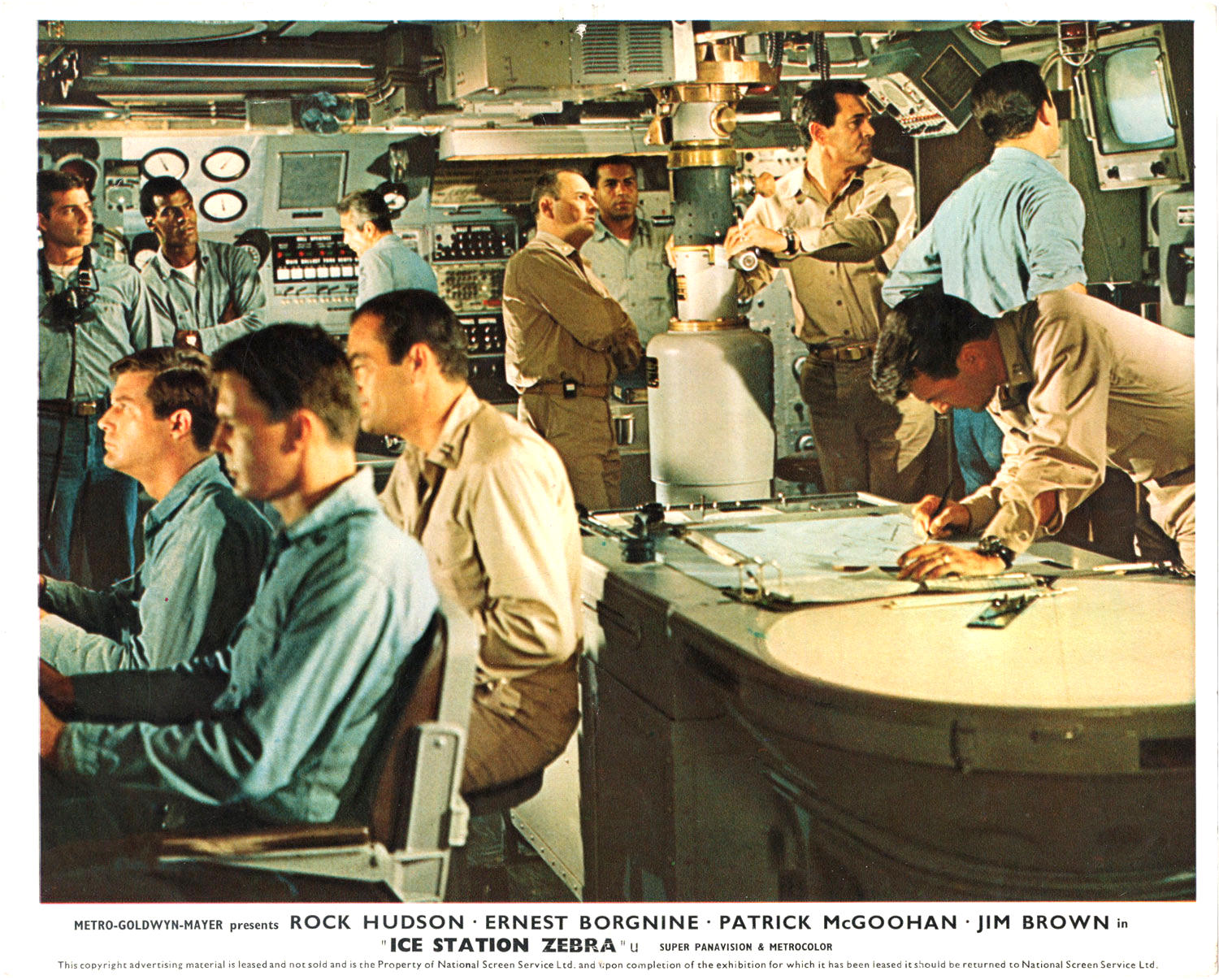
FILMING
Filming began in June 1967. The film was budgeted at $8 million. Principal photography lasted 19 weeks, ending in October 1967. By the time it was finished the cost had risen to $10 million.
Ice Station Zebra was photographed in Super Panavision 70 by Daniel L. Fapp. The fictional nuclear-powered submarine Tigerfish (SSN-509) was portrayed in the movie by the diesel-electric Guppy IIA class sub USS Ronquil (SS-396) when seen on the surface. For submerging and surfacing scenes, the diesel-electric Guppy IA USS Blackfin (SS-322) was used, near
Pearl
Harbor. The underwater scenes used a model of a Skate-class nuclear submarine. George Davis, head of the art department at MGM, spent two years researching interior designs for the submarine.
Second unit cameraman John M. Stephens developed an innovative underwater camera system that successfully filmed the first continuous dive of a submarine, which became the subject of a documentary featurette, The Man Who Makes a Difference.
During filming, Patrick McGoohan had to be rescued from a flooded chamber by a diver who freed his trapped foot, saving his life. As he was also making his television series The Prisoner during principal photography on Ice Station Zebra, McGoohan had the episode "Do Not Forsake Me Oh My Darling" re-written to have the mind of his character transferred into the body of another character.
CRITICS & BOX OFFICE
Ice Station Zebra was not popular with audiences, losing substantial money. It premiered at the Cinerama Dome in Los Angeles on October 23, 1968 where Rock Hudson was heckled at the premiere. The film opened to the general public the following day. The film earned theatrical rentals of $4.6 million domestically.
The escalating production costs of this film, along with the poorly-received The Shoes of the Fisherman at the same time, led to the transfer of MGM President Robert O'Brien to chairman of the board, though he resigned that position in early 1969, after both films were released and failed to recoup their costs.
Ice Station Zebra received mixed reviews from critics. Ice Station Zebra holds a 47% "rotten" rating on the review aggregator Rotten Tomatoes, based on 15 reviews with an average rating of 5.30/10.
On December 21, 1968, Renata Adler reviewed the film for The New York Times: "a fairly tight, exciting, Saturday night adventure story that suddenly goes all muddy in its crises... It doesn't make much difference, though... The special effects, of deep water, submarine and ice, are convincing
enough - a special Super Panavision, Metrocolor, Cinerama claustrophobia... (The cast) are all stock types, but the absolute end of the
movie - when the press version of what happened at a Russian-American polar confrontation goes out to the
world - has a solid, non-stock irony that makes this another good, man's action movie, (there are no women in it) to eat popcorn by."
In the March 1969 issue of Harper's Magazine, Robert Kotlowitz wrote: "... a huge production, one of those massive jobs that swallow us alive... For action it has crash dives, paratroopers, Russian spies, off-course satellites, and a troop of Marines, the average age of whom seems to be fourteen. It also has Rock Hudson...Patrick McGoohan...Ernest Borgnine, Jim Brown, and enough others to field maybe three football teams. And best of all there is also some nice suspense and pacing for at least two-thirds of the movie's three-hour length. It comes apart a bit only when the mystery starts to unravel; but that is the nature of mysteries..." Kotlowitz's review suggests that seeing the film in theaters equipped for Super Panavision 70 played a significant role in a viewer's experience:
What really got me was the kind of details that the immense, curving Cinerama screen was able to offer... Every single glistening drop of bow spray can be seen as it comes pouring over the submarine's surface, caught by a camera strapped to the conning tower. There are beautiful abstract patterns made by the sub as it cuts its way through the
North
Sea, all the gleaming, meticulous, finely wrought, intricate machinery inside the sub, and huge chunks of mountainous ice hanging down from the roof of the ice cap like molars. Nothing could distract me from that screen, not even several minutes of confused story-telling at the end of the film... Buy some popcorn and see the movie.
At the time of the film's release Variety's brief review praised it, highlighting the performances: "Film’s biggest acting asset is McGoohan, who gives his scenes that elusive ‘star’ magnetism. He is a most accomplished actor with a three-dimensional presence all his own. Hudson comes across quite well as a man of muted strength. Borgnine's characterization is a nicely restrained one. Brown, isolated by script to a suspicious personality, makes the most of it."
In April 1969, Roger Ebert of the Chicago Sun-Times described it as "so flat and conventional that its three moments of interest are an embarrassment" and called it "a dull, stupid movie". He expressed disappointment that the special effects did not, in his opinion, live up to advance claims, comparing them unfavorably to the effects in 2001: A Space Odyssey. (MGM pulled the hugely successful 2001: A Space Odyssey from Cinerama venues in order to make way for Ice Station Zebra.)
Writing for TCM, Lang Thompson calls the film "a nifty thriller of spies, submarines and saboteurs that captivated no less a personage than Howard Hughes, who reportedly watched it hundreds of times. You certainly won't regret watching it once." Thompson is referring to the fact that "In the era before VCRs, Howard Hughes would call the Las Vegas TV station he owned and order them to run a particular movie. Hughes so loved Ice Station Zebra that it aired in Las Vegas over 100 times."
In the September/October 1996 issue of Film Comment, Director John Carpenter contributed to the magazine's long-running Guilty Pleasures feature. He included Ice Station Zebra on his list, asking "Why do I love this movie so much?"
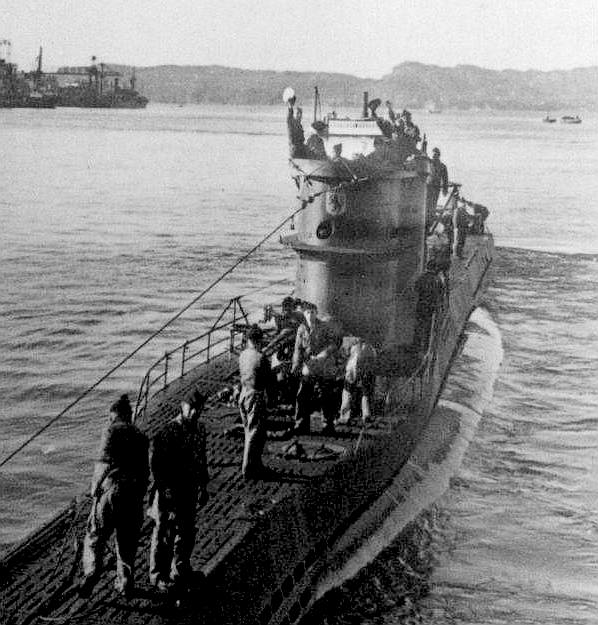
REAL HISTORICAL EVENTS
The plot has parallels to events from April 1959 concerning Discoverer 2, a missing experimental US Corona satellite capsule that inadvertently landed near
Spitsbergen, Norway, in the Arctic Ocean on April 13. It was believed to have been recovered by Soviet agents.
In 2006, the US National Reconnaissance Office declassified information stating that "an individual formerly possessing Corona access was the technical adviser to the movie" and admitted "the resemblance of the loss of the Discoverer II capsule, and its probable recovery by the Soviets" on Spitsbergen Island. The story has parallels with the CIA's Project
COLDFEET, which took place in May and June 1962. In this operation, two American officers parachuted from a CIA-operated Boeing B-17 Flying Fortress to an abandoned Soviet ice station. They were picked up three days later by the B-17 using the Fulton surface-to-air recovery system.
The sabotage aboard the submarine that nearly resulted in its sinking is based on the loss of the Royal Navy's HMS Thetis in Liverpool Bay in 1939. In that case, however, the drip cock was accidentally blocked on the newly built craft by fresh paint, which led to the rear cap being opened while the bow cap was already open to the sea. Water entered at the rate of one ton per second and Thetis sank with the loss of 98 lives. In the movie, the drip cock was intentionally blocked with epoxy glue.
FILMS
A - Z
20,000
LEAGUES UNDER THE SEA - JULES
VERNE, WALT
DISNEY, KIRK DOUGLAS, JAMES MASON
AGENT
S-03 OPERATION ATLANTIS, 1965 ITALIAN EURO SPY-FI, JOHN
ERICSON
AQUAMAN
- JASON MOMOA - WARNER BROS. DC STUDIOS 2018
ATLANTIS:
THE LEGEND BEGINS (BBC) NETWORK TV SERIES 2013
ATLANTIS:
THE LOST CITY
OF
ATLANTIS:
THE LOST CONTINENT - MGM 1961
ATLANTIS:
THE LOST EMPIRE, 2001 LIVE ACTION FANTASY, DISNEY
BEAR
ISLAND: ALISTAIR MACLEAN 1979 THRILLER, ARCTIC HUNT FOR NAZI U-BOAT
GOLD
CLASSIC
WWII & COLD WAR, BEST
SUBMARINE MOVIES
CRIMSON
TIDE - 1995, DENZEL WASHINGTON, GENE HACKMAN, BUENA VISTA
DEEPWATER
HORIZON - BP OIL SPILL DISASTER BIOPIC 2016
GRAY
LADY DOWN - 1978 SUBMARINE DEEP SEA RESCUE DRAMA, CHARLTON
HESTON
HUNTER
KILLER - 2018, GERARD BUTLER, GARY OLDMAN 2018
ICE
STATION ZEBRA - ALISTAIR MACLEAN SUBMARINE ARCTIC THRILLER
1968 ROCK HUDSON, MGM
K19
- THE
WIDOWMAKER, HARRISON FORD & LIAM NEESON, 2002,
PARAMOUNT NAT. GEOGRAPHIC
LAW
ABIDING CITIZEN - 2009 VIGILANTE ACTION THRILLER, GERARD
BUTLER, JAMIE FOX
NORTH
SEA HIJACK: ROGER MOORE, JAMES MASON 1980 ADVENTURE, CINEMA
SEVEN & UNIVERSAL
THE
HUNT FOR RED OCTOBER - 1990 US SPY THRILLER (SEAN CONNERY,
ALEC BALDWIN) PARAMOUNT
THE
SPY WHO LOVED ME - 1977, ROGER MOORE AS JAMES BOND 007,
ALBERT R BROCCOLI
U571
- WWII U-BOAT SUBMARINE DRAMA, THE CAPTURE OF THE ENIGMA
DECODING MACHINE
CHARACTERS
|
GOLD |
MEDIA |
MOVIES |
SCREENPLAY |
SUBMARINES
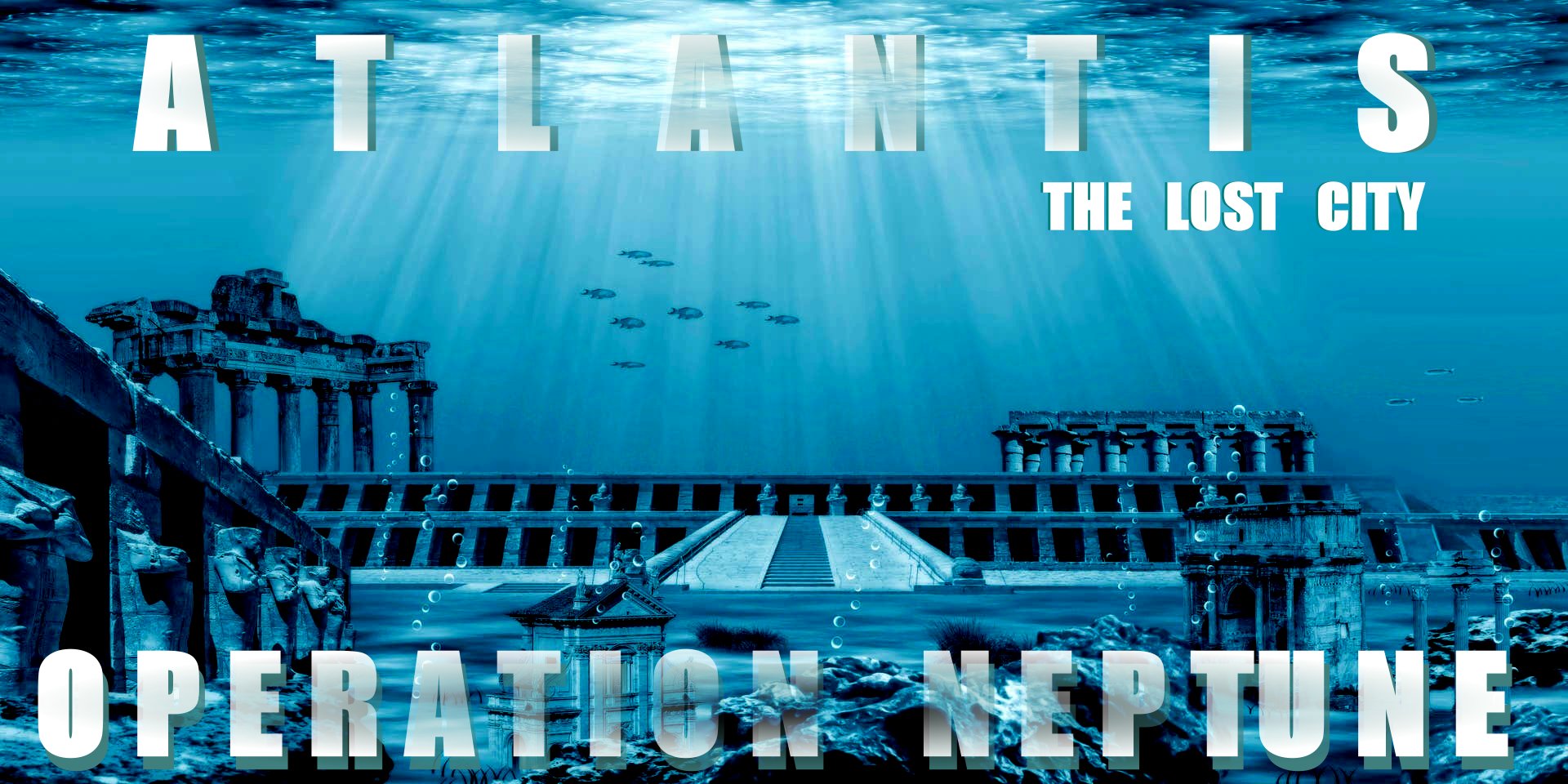
This
website is Copyright © Cleaner
Oceans Foundation Ltd., August 2023. Asserted as per the Berne
Convention.
In
this fictional story, the characters and events are the
product of the author's imagination.
|






